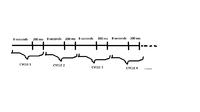pic.programmer
Advanced Member level 3
I am making a small device which uses ATMega328P, Ultasonic sensor and nRF24L01. ATMega and nRF should get 3.3V and Ultrasonic sensor should get 5V. I have two questions.
1. If ultrasonic US-020 is powered from 5V then does the Trigger and echo pins of it (5V TTL) affect the 3.3V input pin of ATMega ? Should I use resistor to drop the 5V TTL echo signal of ultrasonic sensor to 3V range for ATMega ?
2. Can I use zener to provide 3.3V to ATMega and nRF24L01 and 5V to Ultrasonic sensor from 9V battery.
I want the device to run on battery for atleast 1 year.
It checks distance and then sends the data to master powered from adapter and then goes to power down for 8 seconds and then wakes up again due to WDT and then repeats the same thing. It is like starting the function at beginning of while(1) loop then get distance data and send it to master and then at the end of while(1) loop it goes to power down mode and then wakes after 8 seconds.
How long can my device work on a 9V battery ?
I am referring this.
https://arduino.stackexchange.com/q...the-max-power-consumption-of-arduino-nano-3-0
1. If ultrasonic US-020 is powered from 5V then does the Trigger and echo pins of it (5V TTL) affect the 3.3V input pin of ATMega ? Should I use resistor to drop the 5V TTL echo signal of ultrasonic sensor to 3V range for ATMega ?
2. Can I use zener to provide 3.3V to ATMega and nRF24L01 and 5V to Ultrasonic sensor from 9V battery.
I want the device to run on battery for atleast 1 year.
It checks distance and then sends the data to master powered from adapter and then goes to power down for 8 seconds and then wakes up again due to WDT and then repeats the same thing. It is like starting the function at beginning of while(1) loop then get distance data and send it to master and then at the end of while(1) loop it goes to power down mode and then wakes after 8 seconds.
How long can my device work on a 9V battery ?
I am referring this.
https://arduino.stackexchange.com/q...the-max-power-consumption-of-arduino-nano-3-0
Last edited:
